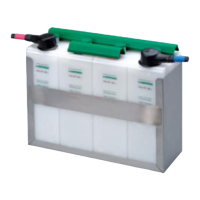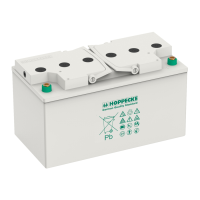What to do if the available battery capacity is low in Hoppecke Camera Accessories?
- AAshley SaundersAug 4, 2025
If the available battery capacity is low, it might be due to a boost charging process that is too short. In this case, run a reconditioning charge. Another cause could be electrolyte levels below the minimum; correct the electrolyte level. Also, check for loose or oxidised terminals and control all connections, changing connectors if necessary, and use new spring washers.



